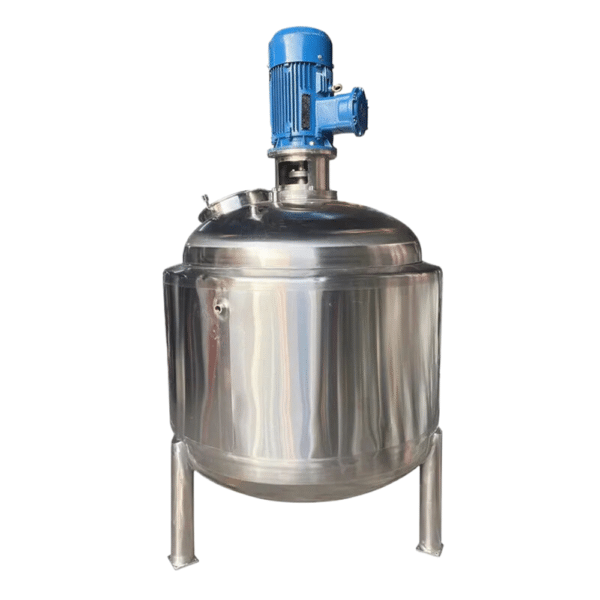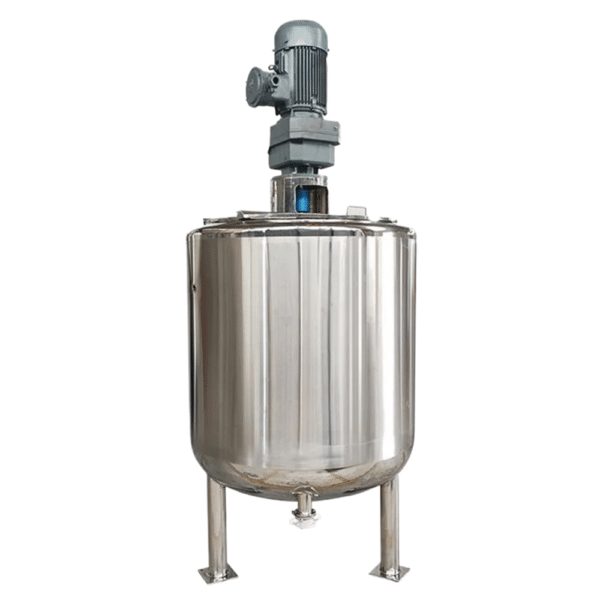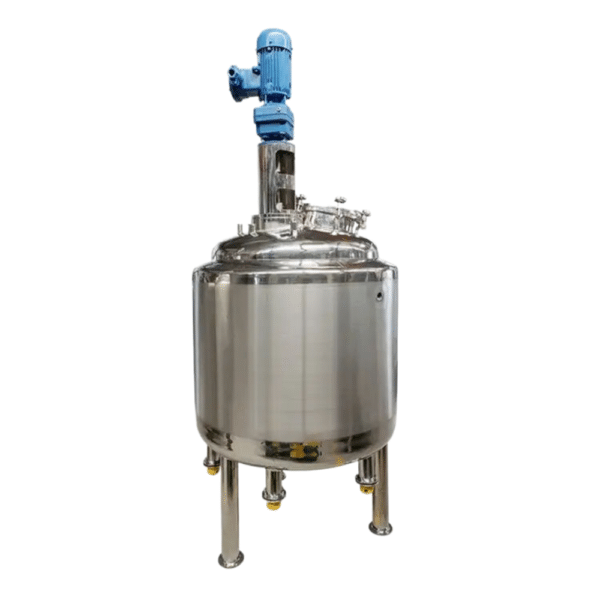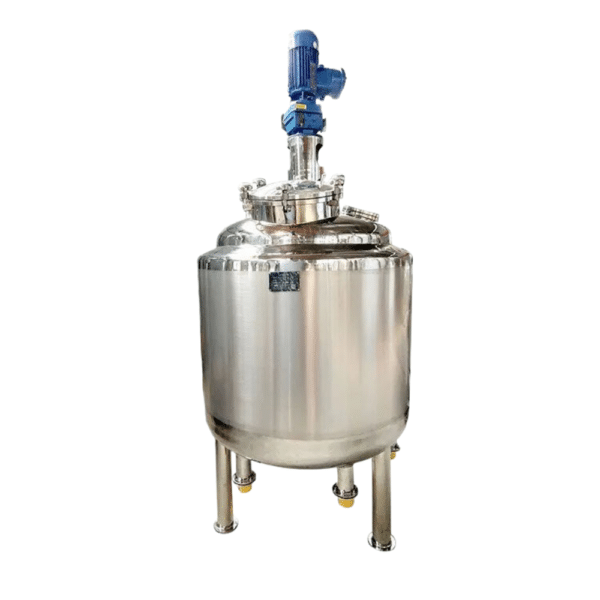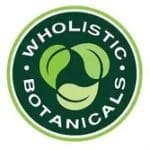Material Options: 304 and 316L Stainless Steel
304 Stainless Steel
This grade is resistant to most oxidation and corrosion processes and is therefore fit for normal mixing processes. It performs well in both acidic and alkaline solutions.
316L Stainless Steel
It is more appropriate for more intrusive applications. Molybdenum imparts corrosion resistance to 316L stainless steel, especially against chlorides and acidic chemicals. 316L is ideal for more corrosive materials or applications needing highly controlled environments, such as the pharmaceutical and food processing industries.
Multiple Agitator Options for Optimal Performance
Depending on the nature of the materials being mixed, the 1000 liter mixing tank can be fitted with various agitators to achieve suitable blending, which could be emulsifying or homogenizing. The choice of readily available agitators extends from viscous, dense, and type of the product to be processed. Such agitators include:
Propeller Agitator
Ideal for mixing low to medium viscosity liquids and enables efficient circulation and axial flow.
Anchor Agitator
Best suited for reliable mixing in highly viscous products, such as thick liquid mixing techniques.
Turbine Agitator
Useful in emulsifying or dispersing solids into liquids, commonly employed in chemical or pharmaceutical processes.
Magnetic Stirrer
For processes where mixing should be done without risks of contamination, such as in pharmaceutical or food industries.
Triple-Layer Design for Added Efficiency
One of the distinguishing characteristics of this 1000 liter mixing tank is that it is manufactured in three layers, which enhances and provides additional use to the tank. The three layers include:
Inner Layer
This layer is in contact with the product. It’s constructed of either 304 or 316L stainless steel and has a high degree of smoothness to ease cleaning after use, thereby meeting the hygiene standards set in the industry.
Middle Layer
This mantle layer provides efficient temperature control by allowing heated or cooled media like steam, water, or oil to be cycled around the tank to achieve the requisite mixing temperatures.
Outer Layer
The outer layer provides thermal resistance so that the outer temperature does not affect the product in the tank. It also helps enhance the efficiency of the system’s energy usage.
Heating Options: Electric or Steam
The 1000 liter mixing tank can have electric heating or a steam heat exchange system depending on the process requirements. Both options are designed to provide the requisite temperature during mixing.
Electric Heaters
This involves the installation of electric heating elements in the jacket. It’s appropriate for areas lacking steam lines or where detailed temperature control is required.
Steam Heating
Steam heating is excellent for industries with a steam supply, providing a fast heating process for highly demanding processes, with efficiency and cost-effectiveness.
Available Powers and Voltages
Based on industrial power requirements, the 1000 liter mixing tank ranges from 1.5 KW up to 55 KW, suitable for low energy as well as high energy mixing processes. Additionally, the tank can operate under a wide range of voltage levels, ranging from 220V to 600V, making it useful in different areas of the globe where various industries are found.
Uses of a 1000 Liter Mixing Tank
The 1000 liter mixing tank can be used in various industries due to its strong design and variation in features, including:
Drug Formulation
Used to prepare liquid medicines, creams, and ointments, ensuring that all components are thoroughly combined and intact at the target temperature.
Cosmetics
Recommended for the production of lotions, gels, and other personal care and beauty products. The triple-layer construction and different types of agitators accomplish the expected results of smooth and homogeneous mixtures.
Food and Beverage
Suitable for the dilution of dressings, sauces, syrups, dairy products, and beverages. The stainless steel material offers compliance with food safety requirements, and jacketed heating allows for heat-sensitive processes like pasteurization if necessary.
Chemicals
Used to combine chemical substances that require temperature control and corrosion-resistant materials.
Frequently Asked Questions (FAQs)
What distinguishes 304 from 316L stainless steel?
The primary difference is corrosion resistance. 316L stainless steel has molybdenum, which gives it better resistance against chloride ions and acidic environments compared to 304 stainless steel.
Can the 1000 liter mixing tank be customized according to my process?
Certainly. The tank is highly flexible and allows you to select different types of agitators, heat sources, and controls to suit your processes.
What maintenance does the tank require?
Maintenance includes regular cleaning and inspection of seals, valves, and agitators. 316L stainless steel tanks require minimal maintenance due to their corrosion resistance.
How is the temperature regulated in the tank?
Temperature control is achieved through the tank jacket, which can route steam, water, or oil. Electric heaters are also effective for accurate temperature control.
What safety features does the tank include?
Standard insulating elements include pressure relief valves, temperature sensors, and insulation to prevent burns, ensuring operator safety and process efficiency.
How long does it take to manufacture and deliver a tank with customized specifications?
Customization complexity determines delivery time, with an average production time of four to eight weeks.
Contact Us to Purchase Your 1000 Liter Mixing Tank
The 1000 liter mixing tank is an essential tool that offers optimum and dependable mixing solutions for various industries. It is reliable for pharmaceuticals, cosmetics, food and beverages, or chemicals – all industries that require complex processes.
For more information or a quote for a customized 1000 liter mixing tank, contact us today. We will help you choose the most appropriate combination to fit your specific processing and manufacturing requirements.


